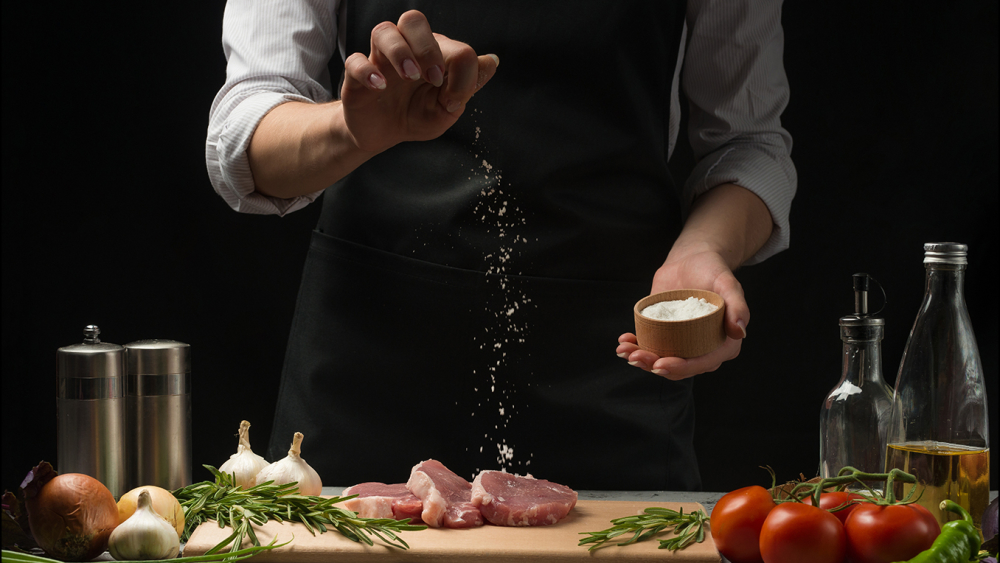
You need to understand the causes of warping in your cast iron skillet. These are Thermal expansion, Sharp flash, or re-seasoning. These problems can be avoided by reading this article. Here are some easy ways to avoid warping your skillet. Here are some common causes. You can also check out this article on Sharp flash and Re-seasoning.
Thermal expansion
Cast iron is vulnerable to warping due to sudden temperature changes. The center of the cast iron expands when the temperature changes quickly, whereas the outer layer doesn't. Cast iron can also warp or break if it is exposed to cold water. This is known as thermal shock. You can prevent this from happening by heating your cast iron pan properly before you use it.
It is best to allow your meat to cool down before you heat it. This will decrease the temperature difference between meat and pan. Mismatched pan sizes are another cause of warping. For example, if you place a large pan on a small burner, only the center is in contact with the heat, the central area will expand faster than the rest of the pan.

Sharp flash
Cast iron cookware will have seen this problem. The sudden temperature fluctuations can cause a sharp flash. The heat center of a saucepan expands while its cool centre doesn't. This causes stress to the iron, which in turn causes it to warp. Most flashes can be trimmed during the finishing process. Some flashes can be left in the handle. Remember that flashing won't affect cooking or handling. It is not a sign for poor quality.
The shape of cast iron cookware is a good indicator that it has begun to warp. This is often seen on the bottom. It's more common in long flat castings. Instead, search for curving shapes at the thickest point of the wall. Warped pans often cause liquid to pool in the middle and uneven cooking. If you notice any of these signs, try placing the pan on a flat surface. If it's warped, it's a sign of a warped pan, but may still be usable on a gas stove burner or in the oven. The item's collectible value will be decreased if it has too much warp.
Re-seasoning
If you're looking for a quick, easy, and inexpensive way to re-season your cast-iron skillet, try placing ice cubes on the warped section and running a small amount of cold water over it. The ice will help flatten the warped area, and the water will also cool it down. The temperature difference between the cast iron pan and the water will cause warping.

Re-seasoning cast iron will help ensure your skillet is strong and will not warp. The seasoning will make your pans less susceptible to rust and prevent them from warping. Preheat your pan to 200 degrees Fahrenheit. Once the pan is hot, you should be able to see small amounts of oil in the low parts. Once the oil has gathered in the low areas, you can place the pan in an oven at 425 degrees F for about an hour. Once again, bake for one hour at 450 degrees F.
FAQ
What are the basic skills of cooking?
Basic cooking skills include being able to read and measure ingredients, prepare food safely, clean up after yourself, and cook. These skills are essential if you wish to cook well for yourself. Cooking is also a great way to save money since you don't have to eat out all the time.
How can I be motivated to cook?
Sharing food with friends and family is a great way to have fun cooking. However, cooking for yourself is much easier than cooking for others. Make something new to get motivated to cook. This will help you learn about new techniques and ingredients. Also, you can use recipes from different cultures to expand your culinary knowledge.
Can you become a self-taught chef?
Self-taught cooking is possible! Everyone loves cooking, regardless of whether they are skilled or not. Learn how to cook at home. Start small with simple things like spaghetti sauce or pancakes for breakfast. Try new recipes and be open to experimentation when learning how to cook. You may even want to make a few mistakes along the way.
It takes anywhere from several hours to several weeks to learn how to cook, depending on your skill level. Remember that cooking is not about following recipes. There are many ways to cook food. If you have an idea, follow it.
Statistics
- According to the BLS, chefs earn $58,740 a year. (learnhowtobecome.org)
- The median pay for a chef or head cook is $53,380 per year or $25.66/hour, according to the U.S. Bureau of Labor Statistics (BLS). (learnhowtobecome.org)
- You'll be amazed that over 90% of CIA students receive scholarships and grants to finish their culinary studies. (ischoolconnect.com)
External Links
How To
How to make a perfect eggroll
Omelets is one of my favourite breakfast foods. But how do you make them perfectly? Many different recipes and methods have failed to work for me. So I am sharing some tips and tricks today to help you make fluffy, delicious omelets every morning.
We should first know that eggs are very temperamental ingredients when making omelets. Eggs must be purchased fresh, preferably organic, and kept chilled until ready for cooking. If you don't keep them cold enough, the whites won't form properly, and the yolks will break down too much and become runny. This causes your omelets to look oddly colored. If you want to make omelets right away, it's best not to use eggs that are too cold.
Another tip is to separate each egg before adding them to the saucepan. You don't want any white to get mixed up with the yolk because this could cause the omelet to curdle.
The bottom part of an egg that is added directly to the stovetop might be burned, which could cause a ruined texture in your omelet. Instead, place the egg in the microwave for 10 second before you put it in the skillet. The heat from the microwave cooks the egg just enough without overcooking it.
Next, let us talk about how to mix the eggs. When you mix eggs together, you want to beat them well. You can do this by turning the bowl of your mixer upside down. Next, shake the bowl vigorously. This allows the air to be whipped and the egg to be mixed thoroughly.
The fun part is now - adding the milk to the mixture. The first step is to pour half of the milk in the beaten eggs. Next, fold the eggs into the remaining milk. If you still see streaks of eggs, don't worry. These streaks will disappear once the omelet has been turned over.
After folding the eggs, place the pan on medium heat and wait for the oil to start sizzling. Once the oil starts getting hot, add 1/4 cup of butter to the pan and swirl it around to coat the entire surface of the pan. Next, carefully open the lid and sprinkle salt into your pan. An additional pinch of salt will prevent the omelet form sticking to your pan.
Once the omelet forms, cover the pan again. Let the top side set completely. Flip the omelet upside down or with a spatula. Cook the other side for another minute or two. Take the omelet out of the pan and immediately serve.
This recipe is best when used with whole milk. But, you can use skimmed milk as well.